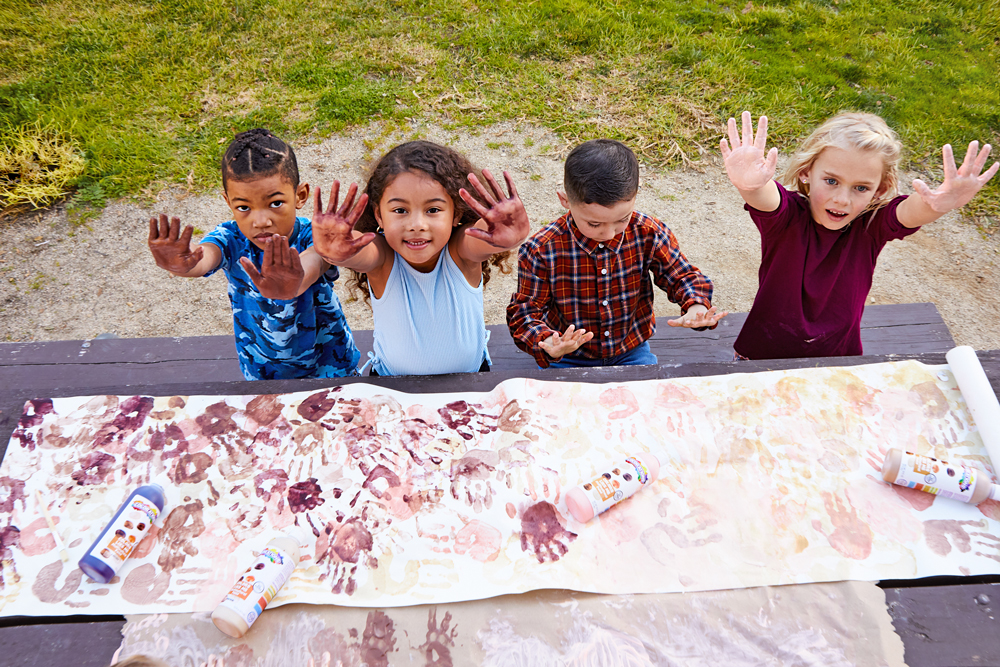Colors Like Me
Articles
Colors Like Me®
Nurturing Tomorrow's Leaders: Teaching Children Diversity and Inclusion Through Art

In an increasingly interconnected world, promoting diversity and inclusion has become paramount. As global citizens, it is our responsibility to teach the values of acceptance, empathy, and respect from a young age. Art is a powerful medium through which these vital life lessons can be imparted. Teaching children diversity and inclusion through art not only encourages creativity but also cultivates the seeds of tolerance, understanding, and compassion. This article explores the profound impact art can have on children's perspectives, and how it can help create a more inclusive and diverse society.

Art as a Universal Language
Art transcends language barriers and can be understood and appreciated by people from all walks of life. This universality makes art a perfect vehicle for teaching children about diversity and inclusion. By exposing them to artwork from various cultures, children can gain a deeper appreciation for the beauty of diversity and learn to embrace differences. Art offers a non-threatening way to introduce children to new ideas and perspectives, fostering open-mindedness and acceptance.
Exploring Cultural Traditions
One of the most effective ways to teach diversity and inclusion through art is by exploring the rich tapestry of cultural traditions. By introducing children to art forms such as traditional dance, music, painting, and sculpture from different parts of the world, we can help them appreciate the beauty and value of these diverse cultural expressions. This not only broadens their horizons but also instills a sense of respect for other cultures and their unique contributions to the world.

Creative Expression and Self-Identify
Art provides children with a platform to express themselves and explore their own identities. Encouraging children to create art that reflects their unique backgrounds and experiences can help them connect with their own culture while also gaining empathy for others. When children understand the importance of self-identity, they are better equipped to appreciate the importance of respecting others' identities, backgrounds, and perspectives.

The Power of Storytelling
Art, in its many forms, is a powerful tool for storytelling. Through stories and narratives, children can be exposed to diverse characters and experiences, promoting empathy and understanding. Encourage children to create and share their own stories that reflect the diverse world around them. This allows them to celebrate differences and recognize the beauty in the uniqueness of others.

Art as a Means of Advocacy
Art can serve as a form of advocacy for children, allowing them to express their views on social justice issues and the importance of diversity and inclusion. Encouraging children to use art to speak out against discrimination and prejudice empowers them to be change-makers. Art projects related to diversity and inclusion can lead to meaningful discussions and actions that promote positive change in their communities.

Collaboration and Teamwork
Art projects often require collaboration and teamwork. By engaging in group art activities that celebrate diversity, children learn the value of working with others from different backgrounds and perspectives. This teamwork fosters an inclusive environment where every voice is heard and respected, nurturing a sense of unity among diverse groups.

Real Life Experiences
Art is not confined to the classroom or studio; it is part of our everyday lives. Encourage children to explore art in the real world, such as visiting museums, attending cultural festivals, or participating in community art projects. These experiences can help them connect with diverse people and cultures in a tangible way.

In Conclusion
Teaching children diversity and inclusion through art is a powerful way to mold open-minded, compassionate, and empathetic future generations. By exposing children to various cultures, traditions, and perspectives, we equip them with the tools they need to thrive in an interconnected world. As they create, collaborate, and learn about the world through art, children not only develop their creative skills but also build a foundation for a more inclusive and diverse society. Art has the potential to be a beacon of hope, guiding the way toward a more harmonious and accepting world.
Shop Colors Like Me® Collection










